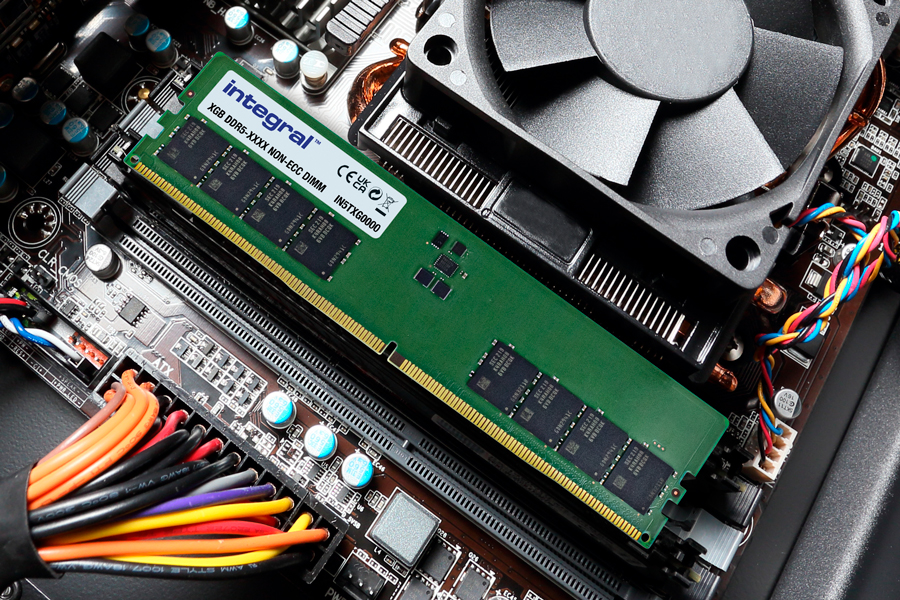The latest and greatest advancement in DRAM technology is DDR5, which is making quite a wave in the industry due to significant increases in memory capabilities. Initially introduced in 2021, the first memory modules meeting this specification are beginning to filter into the mainstream with more servers, PCs and laptops that require the tech reaching the market.
Better power management, increased channel efficiency, and greater performance enable the next generation of multiple core computer systems. But what makes DDR5 different from the previous iterations?
What's New?
Memory Density & Capacity
DDR5 can manage far higher memory density than previous standards. DDR4 chips stopped at 32Gb whilst the new DDR5 cards use chips up to 64Gb. With this generation also supporting die-stacking of up to 8 dies on a single chip, the newest technology can theoretically reach up to 2TB per module. However, this is likely to only be available for server memory with mainstream retail modules reaching around 128GB. Even this much smaller 128GB size module is a way off yet, with available DDR5 memory currently providing a maximum of 16/32GB.

Data Rates
According to the JEDEC (Joint Electron Device Engineering Council) specification, the DDR5 data rates seem to be a continuation from DDR4.
DDR4-1600 up to DDR4-3200
DDR5-3200 up to DDR5-6400
However, if as in previous generations the starting data rate to hit the market exceeds the minimum JEDEC specification, there will be quite a jump between the rates of DDR4 and DDR5.
Architecture
With two independent 32-bit channels (40-bit with ECC) working in tandem, the DDR5 memory modules have improved efficiency and reduced latency compared to DDR4’s single 64-bit channel (72-bit ECC).
These efficiencies have also been enhanced with the doubled burst rate from 8 to 16 bytes.
Power Management
Switching power management from the motherboard to an on-board power management chip (PMIC) the DDR5 allows greater stability through enhanced voltage regulation and signal integrity.
Additionally memory modules which conform to the JEDEC specifications (read not-overclocked) run on 1.1V further pushing energy efficiencies from previous DDR generations.
On-die ECC
On-die ECC offers integrity of data within the memory module improving reliability. Not to be confused with standard error-correcting code, as on-die ECC does not offer protection for your data when in transit from the memory module to the CPU.
Upgrading to DDR5

If you’re after increased bandwidth, higher capacity, better stability and reliability, then DDR5 might be the way to go, but for now you will only really need the upgrade for the latest and greatest games and rendering programmes. The type of software that cannibalises RAM and would usually have your PC juddering to a halt.
You’ll also have to factor in that an upgrade across DDR generations will mean a rebuild of your current rig, or a new computer. For example DDR4 compatible motherboards can’t take DDR3 or DDR5 modules.
If you’re currently running DDR3, then either adding more RAM or rebuilding/purchasing new with DDR4 will give you the most bang for your buck, rather than going straight to DDR5.
Right now, DDR5 is more about future proofing your rig. As software continues to develop and become more complex, and games needing higher and higher frame rates to render fluidly, you’ll need bigger and better RAM modules to keep your computer running smoothly. If you’re investing now in a new PC and you want to ensure your PC will be running smoothly for years to come, then DDR5 will be the way to go.
Find compatible RAM for your system in an instant with our Configurator
